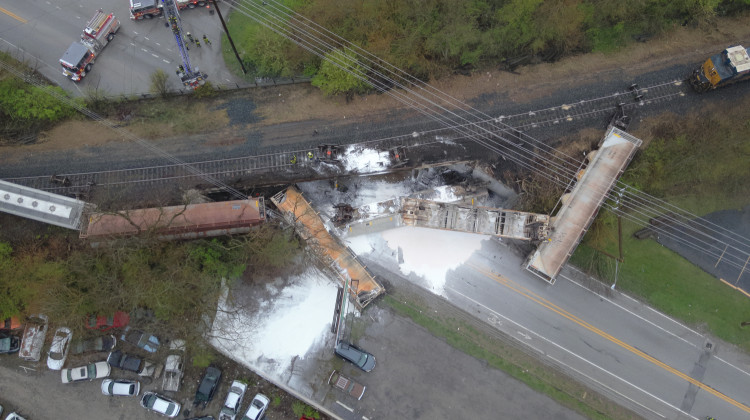
Map of Indiana with color-coded regions based on eviction rates.
(Courtesy of the Eviction Research Network)Indiana had one of the highest eviction rates in the country both before and during the pandemic, according to data released by the Eviction Research Network.
The data show that even during the Centers for Disease Control and Prevention eviction moratoria, Indiana’s eviction rates were only slightly lower than historic averages. Much of the data underlines existing research from both SAVI and Eviction Lab.
Tim Thomas is the director of the Eviction Research Network out of the University of California, Berkeley. He said while many states saw dramatic dips in eviction rates throughout the pandemic, Indiana’s rates stayed relatively close to historic averages.
“Indiana is one of the few where the filing rates got back up to 50, 60 percent of historical average all the way through and above 80 percent of historical average,” he said. “They were basically floating and skirting right below the historical average during the pandemic.”
Thomas points to states like Minnesota, which enacted a state eviction moratorium that dropped the eviction rate to nearly zero. But, Thomas said, that may be why Minnesota is now seeing an eviction rate of roughly 150% relative to historic averages.
“Across the board, Indiana has just had an incredibly high rate of eviction before, during, and after the pandemic. Particularly Indianapolis, too, has had high rates of eviction,” Thomas said. “It’s really been happening a lot in more of the Black and Brown neighborhoods.”
The data included in the Eviction Research Network report outline wide racial disparities throughout the pandemic. Black and “other” (indigenous, mixed race, and other racial groups) had the highest rates of eviction in 2021, with one in 11 Black renters receiving an eviction filing and one in nine “other” renters receiving a filing.
Thomas said while there was a drop from Black households, it wasn’t much of one.
“Before the pandemic, the rates were much higher… that’s looking roughly at one in eight households getting evicted before the pandemic,” he said. “Moving to one in 11 is a slight improvement, but it’s still showing that there is a massive disparity.”
Thomas says eviction data are just one way of mapping the impacts of things like housing segregation and poverty across a state.
“Really what we’re talking about is poverty, we’re talking about segregation, we’re talking about inequalities that have lasted throughout time,” he said. “Eviction is an important topic, but it’s one of several topics.”
Thomas said his network is trying to track evictions to get a better sense for what policies work to reduce them.
“We know now that moratoria helps reduce eviction, we know that rental assistance helps too – we just need to bake that into a bigger infrastructure that’s more permanent to get at the real issue of housing stability,” he said. “Once we have housing stability, people can start to improve their lives many, many different ways.”
9(MDAyMzk1MzA4MDE2MjY3OTY1MjM5ZDJjYQ000))
 DONATE
DONATE







 Support WFYI. We can't do it without you.
Support WFYI. We can't do it without you.